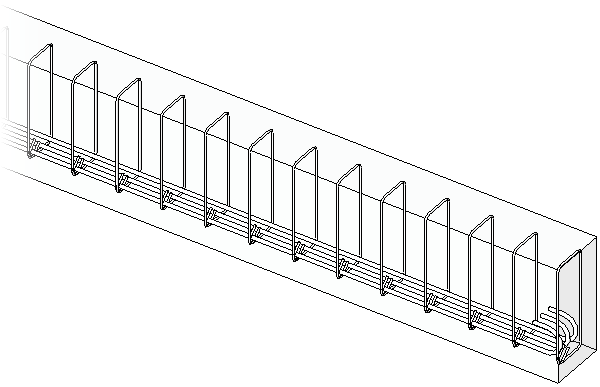Use reinforcement tools to add reinforcement, such as rebar, reinforcement bars, or fabric to valid hosts, such as concrete columns, beams, walls, foundations, and structural floors.
- Structure tab
 Reinforcement panel
Reinforcement panel
 (Rebar)
(Rebar)  (Area)
(Area)  (Path)
(Path)  (Fabric)
(Fabric)
